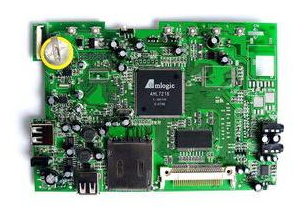What problems should be paid attention to when electroplating the surface of FPC soft board? Here is a brief understanding:
1, flexible circuit board plating
The pre-treatment of FPC electroplating The surface of the copper conductor exposed after the FPC coating process of the masking layer may be contaminated with adhesive or ink, and there may also be oxidation and discoloration due to high-temperature processes. If you want to obtain excellent adhesion The close plating must remove the contamination and oxide layer on the conductor surface, so that the conductor surface is clean.

However, some of these pollutions are very stable in fusion with copper conductors and cannot be completely removed with weak scrubbing agents. Therefore, most of them are often treated with alkaline abrasives with a certain strength and polished. Most of the masking layer adhesives are ring Oxygen resins have poor alkali resistance, which will cause the bonding strength to drop. Although it will not be clearly visible, in the FPC plating process, the plating solution may penetrate from the edge of the masking layer, and the masking layer will peel off when it is critical. . In the final soldering, the solder burrows into the bottom of the masking layer.
2. Flexible circuit board electroless plating
When the line conductors to be plated are lonely and helpless and cannot be used as electrodes, only electroless plating can be used. Generally, the plating solution used in electroless plating has a violent chemical effect, and the electroless gold plating process is a typical example. The electroless gold plating solution is an alkaline aqueous solution with a relatively high pH. When using this kind of electroplating process, it is very easy to cause the plating solution to drill under the masking layer. The unique feature is that if the quality of the masking film lamination process is not strictly handled and the bonding strength is low, this problem is more likely to occur.
Due to the characteristics of the plating solution, the electroless plating of displacement reaction can easily cause the plating solution to penetrate under the masking layer. It is difficult to obtain the ideal plating conditions for electroplating with this process.
3. Flexible circuit board hot air leveling
Hot air leveling was originally a technique developed for the rigid printed board PCB with lead and tin. Because this technique is simple and convenient, it is also used on the flexible printed board FPC. Hot air leveling is to directly immerse the board in a molten lead-tin bath directly and vertically, and blow off the excess solder with hot air. This condition is very harsh for flexible printed circuit board FPC. If the flexible printed board FPC cannot be immersed in the solder without any countermeasures, the flexible printed board FPC must be sandwiched between the screen made of titanium steel., And then immersed in the molten solder, of course, the surface of the flexible printed circuit FPC must be cleaned and coated with flux in advance.